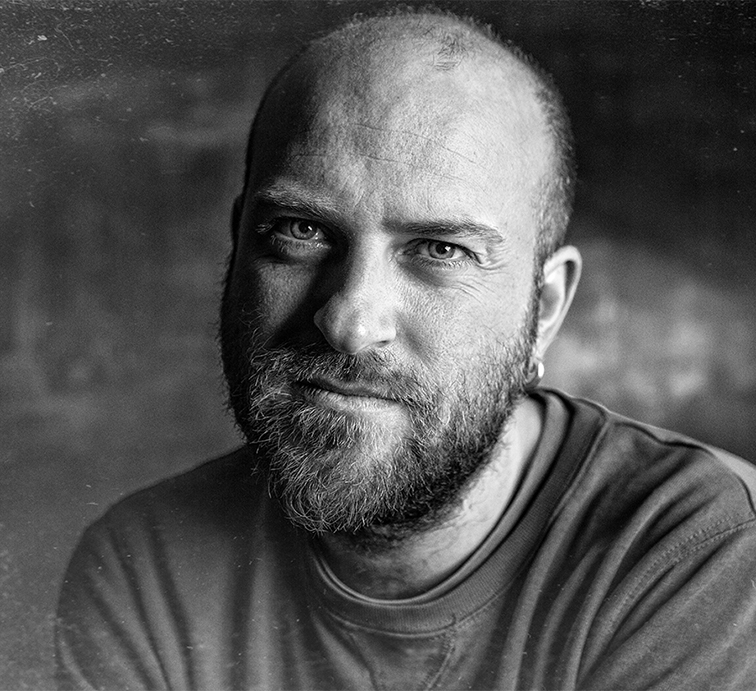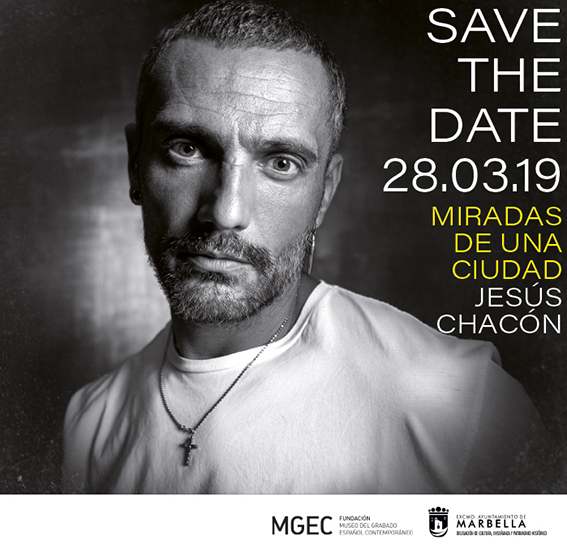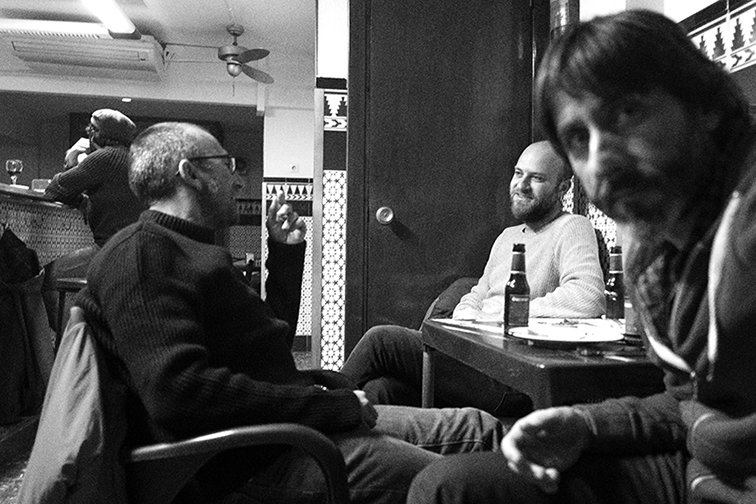His life revolves around literature, dabbling in all types of genres. In fact, he told us that he is about to publish a new poetry book and a novel. Meanwhile, one of the projects to be blessed with his words, a book of portraits entitled ‘Miradas de una ciudad’ (The stares of a city), by Jesús Chacón, will finally be released on 28 March, being launched in the Spanish Contemporary Engraving Museum, in Marbella. We spoke with the poet to find out how this collaboration came to be.

“For me, Marbella is more placental than pleasant”, Alejandro Pedregosa
“Marbella is brimming with culture, but this is barely noticed!”, “There are so many professionals from an incredible range of artistic disciplines!”, “If only there would be a way of bringing them all together”: these ideas were the basis for the ‘Miradas de una ciudad’ project, which partnered the photographs of Jesús Chacón with the words of novelist and poet Alejandro Pedregosa (Granada, 1974). The latter is the author of the storybook ‘O’, winner of the Andalusian Critics’ Storybook Prize, with ‘Historias Dobles’ (Double Stories) being performed in the theatre on 16 and 17 February. We interviewed Alejandro over the phone, when he found pockets of time between the several literary workshops that he is currently organising. As charming and passionate as we expected, the author of the novel ‘Hotel Mediterráneo’ (Mediterranean Hotel) (2015, ed. Planeta) considers the days he spent working alongside Jesús Chacón as one of his most fulfilling experiences of recent years.
How did you meet Jesús?
From Marbella. Our friendship groups would often cross paths, we went to the same schools, drank in the same bars. Although we weren’t friends as such, his colleagues had spoken to him about my work, and I already knew who he was.
What aspect of the proposal for ‘Miradas de una ciudad’ really convinced you?
He explained his proposal so clearly, with such sincerity and honesty, that I just couldn’t say no. We both had the same yearning to make Marbella an artistic location. There are lots of people here who work in different artistic disciplines, so it was more a case of shining a light on them. Being completely honest, it was an idea that I had also mulled over beforehand, so it seemed like a great idea to bring our ideas together.

Besides penning the different texts for the book – one for each of the 74 portraits – did you also take part in the photo sessions. What do you remember about your one?
Well, it was incredibly simple, really. Even Jesús asked me if I had done this sort of thing before. But the truth is that I hadn’t. I felt so comfortable with him taking photos of me that it took us no time at all. I wasn’t tense. I clearly remember it being spring. I know because of the jumper that I was wearing. It was one of those fantastic spring days in Marbella. One of those amazing days with a celestial sky, just like in the photos you see from the 70s. This picture-perfect blue sky is something that really strikes me about the Costa del Sol. First, we were in the studio, and then we shared a beer on the terrace as we discussed the project. In this conversation, Jesús really transmitted the burning passion that he pours into everything that he does.
What was the most interesting part of the experience?
I found writing the texts to be really enriching. You first need to immerse yourself in the biographies of each artist, using that as a platform to create a semi-lyrical text, with two different layers: entrance and feedback. I spent the whole summer working, but it was great, and I was in direct contact with Jesús almost every day.
Did you have a specific method, or did you deal with each portrait individually?
I tended to prop the portrait up in front of me, with the artist’s bibliography on a sheet of paper (although I’d also made my own bibliography for each person, based on the research I had done about each person). Considering everything that each artist had done, and the way in which Jesús had captured their face, their stare etc., I created a small poem of no more than 4 or 5 verses, in which I tried to combine their personality, reflected in the portrait, and the professional character of the individual. I always used the same technique. One half was their life, the other was the image. I wanted the text to transmit information that the reader didn’t need to know about: a young lad who plays rugby, or a painter who isn’t quite as famous as David Delfín or Dani García. The most interesting thing was getting the reader, through the text, to gain an appreciation of what the artist did, and to learn something about their personality and their work.
What ties do you have with Marbella?
I was born in Granada, but I grew up in Marbella. Half of my family live here, and it’s where I consider home. For me, Marbella is more placental than pleasant…it’s like my placenta (laughs).
Does Marbella feature in your books at all?
Yes, especially in my more intimist poetry, about childhood, growing up etc…
Do you have a favourite place in Marbella that inspires you?
The Playa de San Ramón, which is a bit tidier than the beaches along the promenade that everyone goes to. It’s a very popular beach that people from local villages go to. In summer, people from the smallest villages come down to enjoy it. You can really note the differences between these beaches and those in the centre, which are filled with tourists. This beach, in summer and in winter, especially, is one of my favourite places. It is the spot where the beaches of the city run to an end, right there in San Ramón, opposite the port. I love going there to read, think and stretch my legs…
What are you doing now, professionally speaking?
I’m hoping to publish two books: a poetry book and a novel. But I can’t give away any more than that. I’m still giving my literary creation workshops all over Spain: Granada, Barcelona, Pamplona. In Spring I’ll be in Marbella, in fact. I’m also writing in daily newspapers, giving conferences…all the things that one needs to do in a life that revolves around literature.
Interview: Rosa Marqués @rocamarcar







